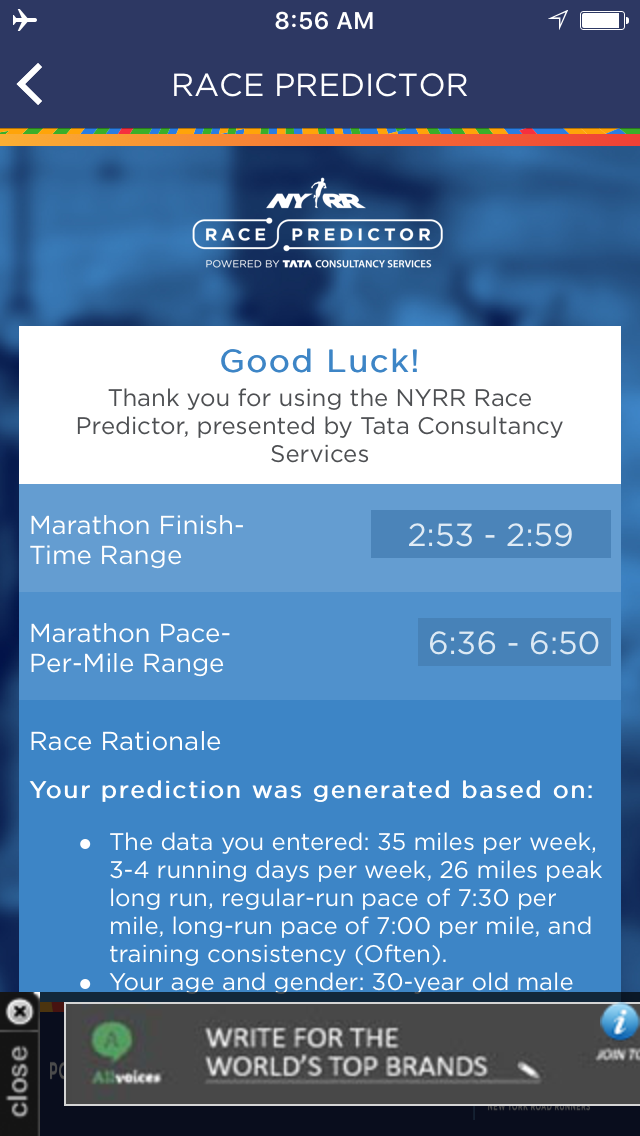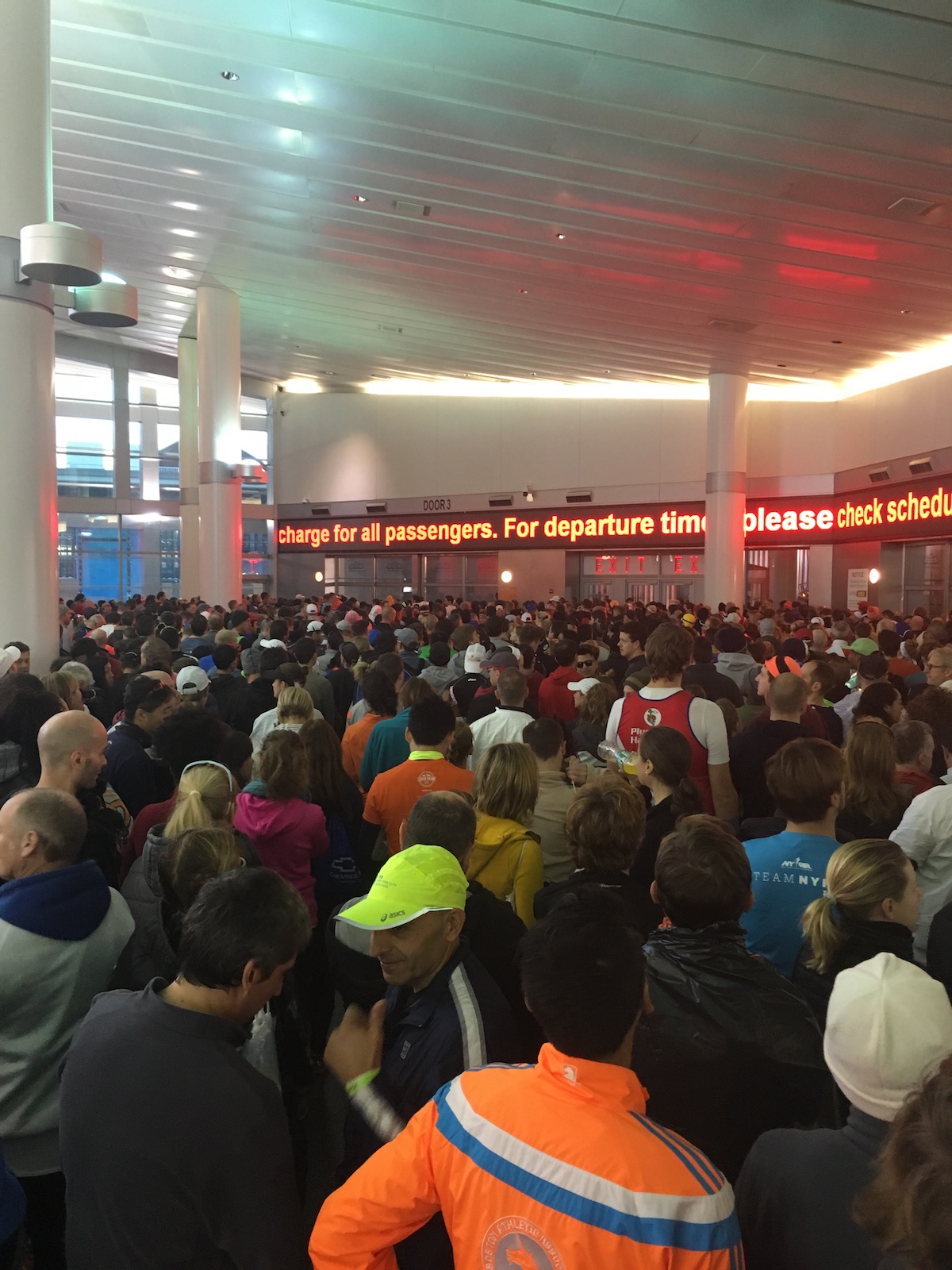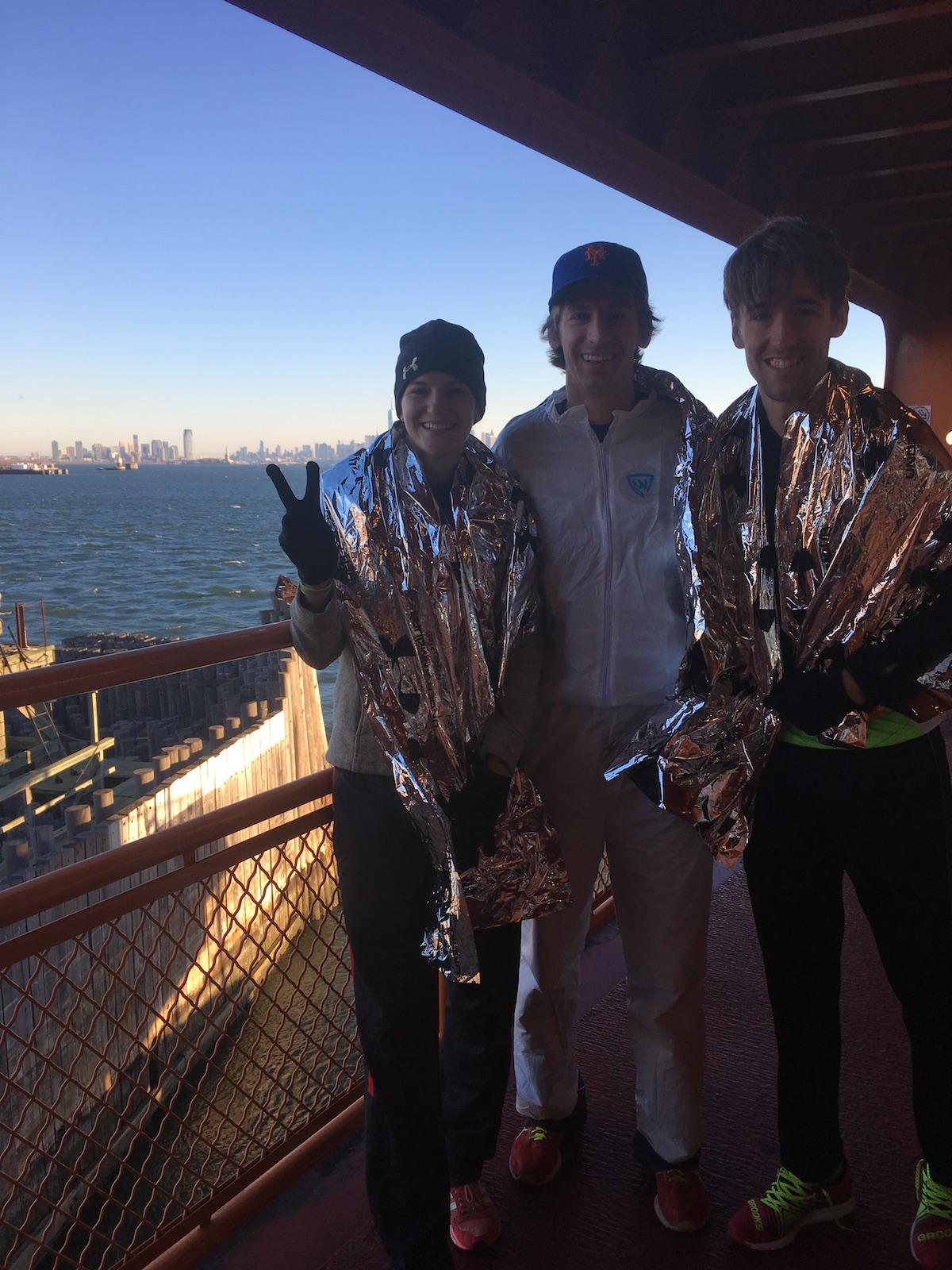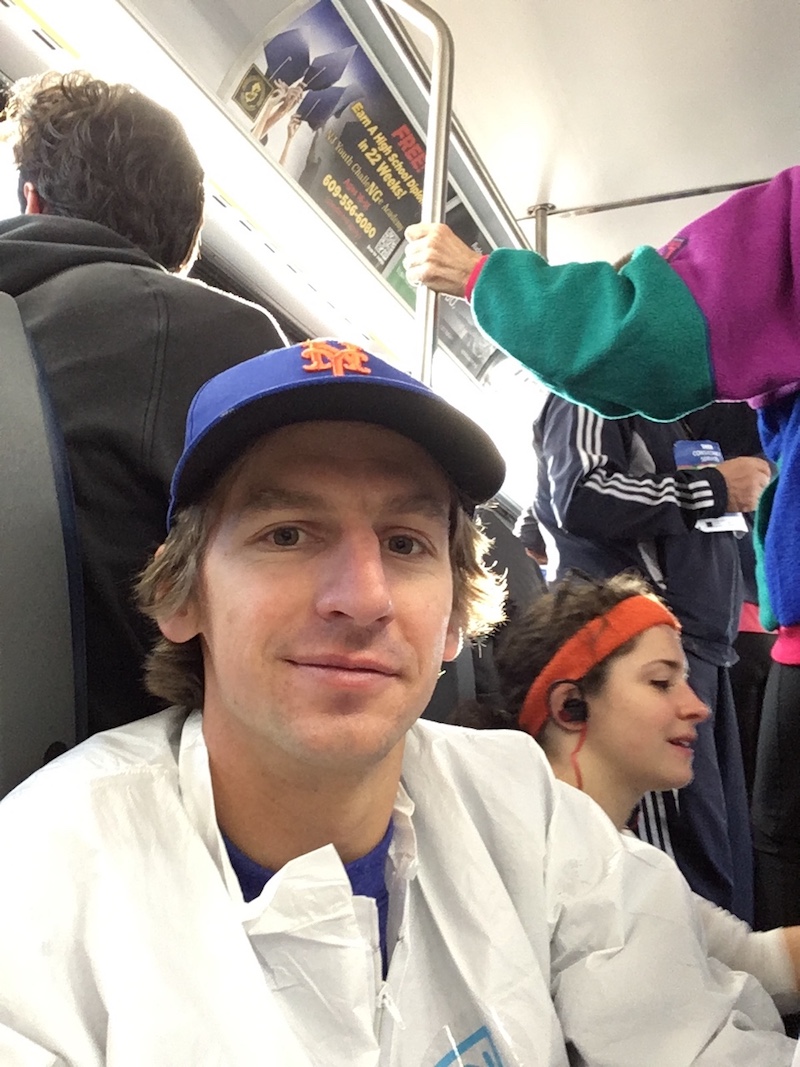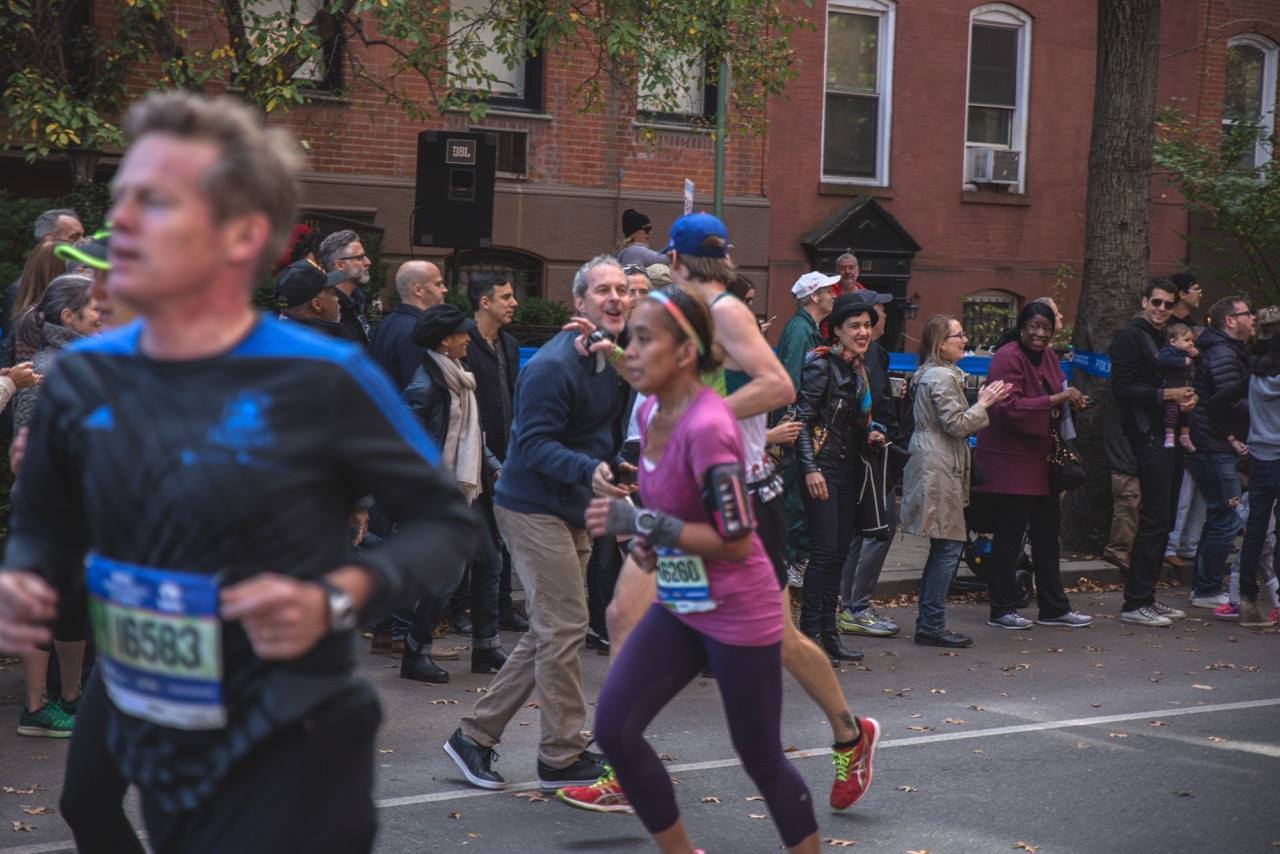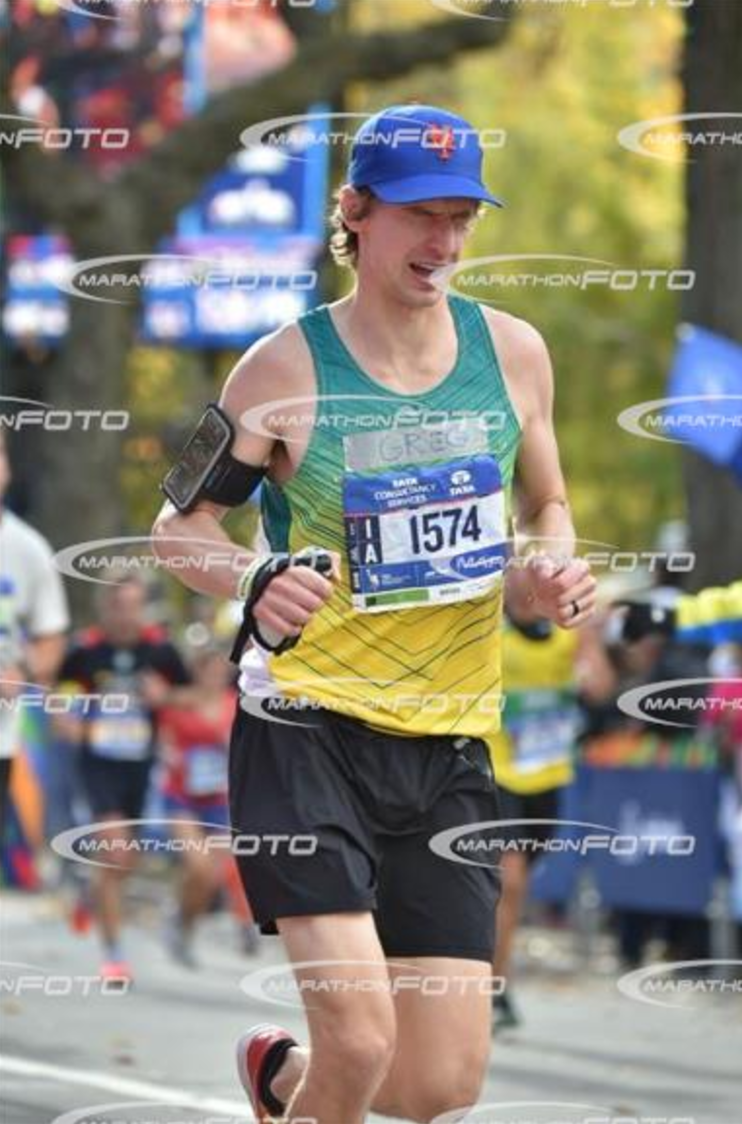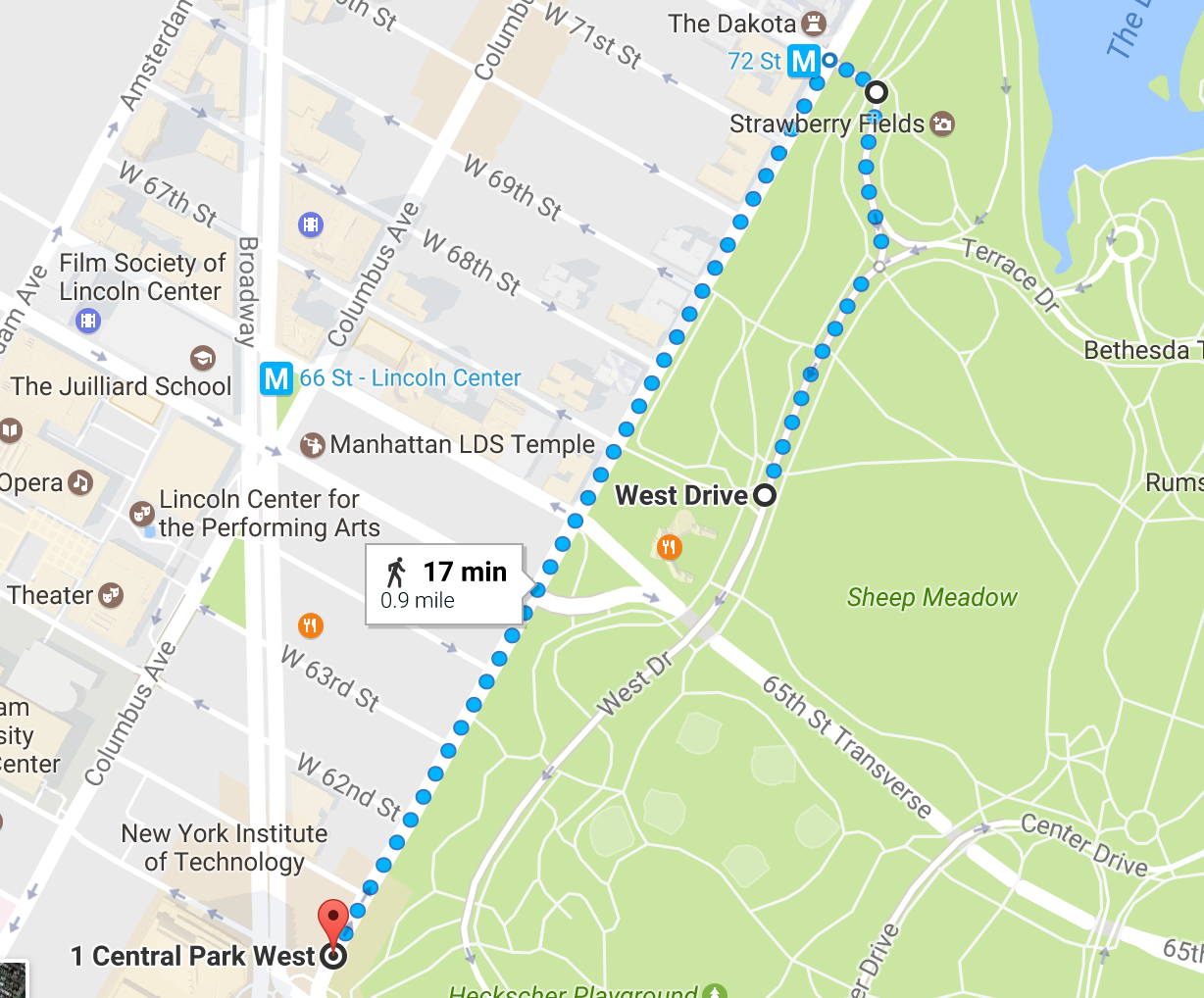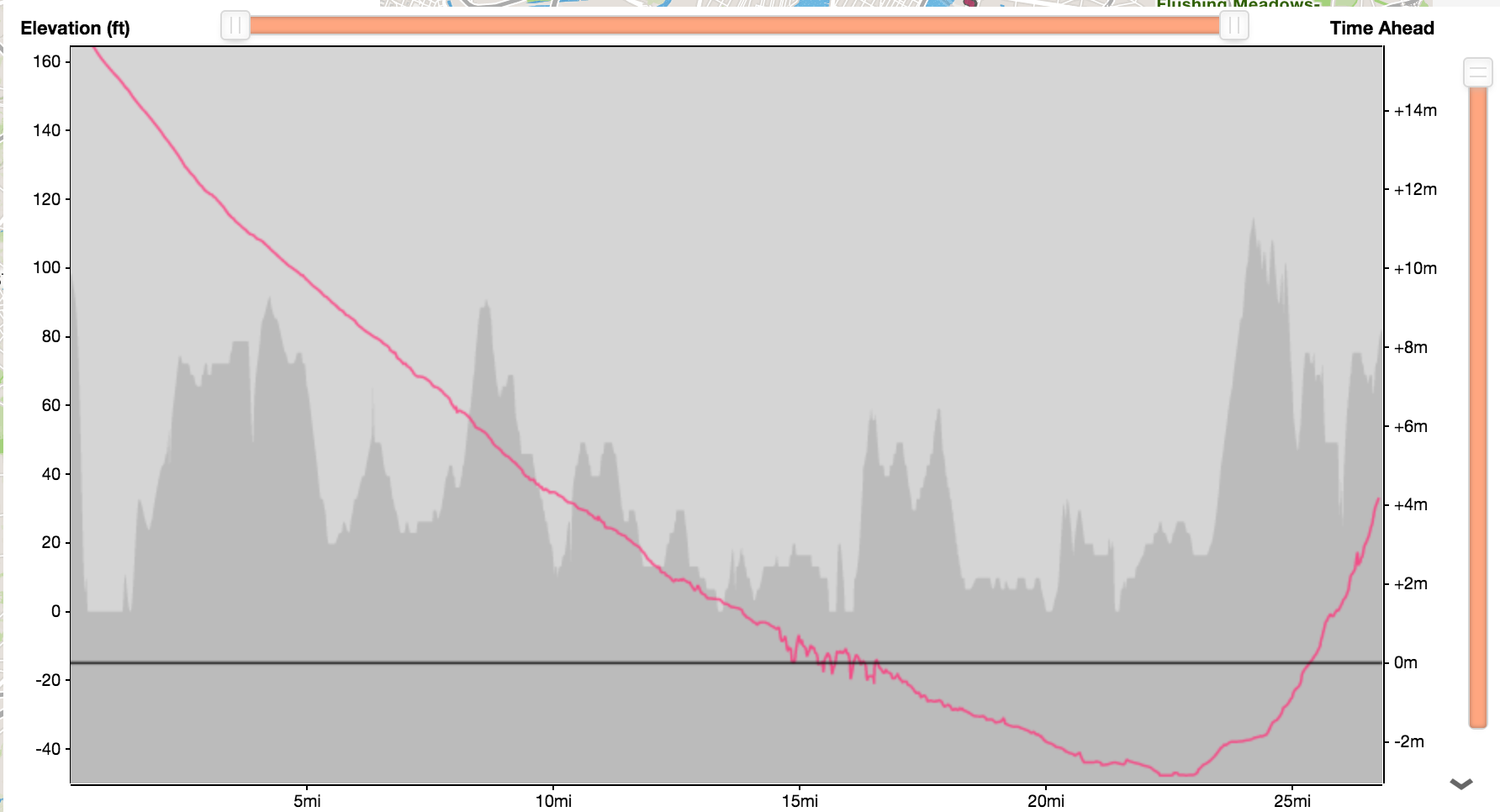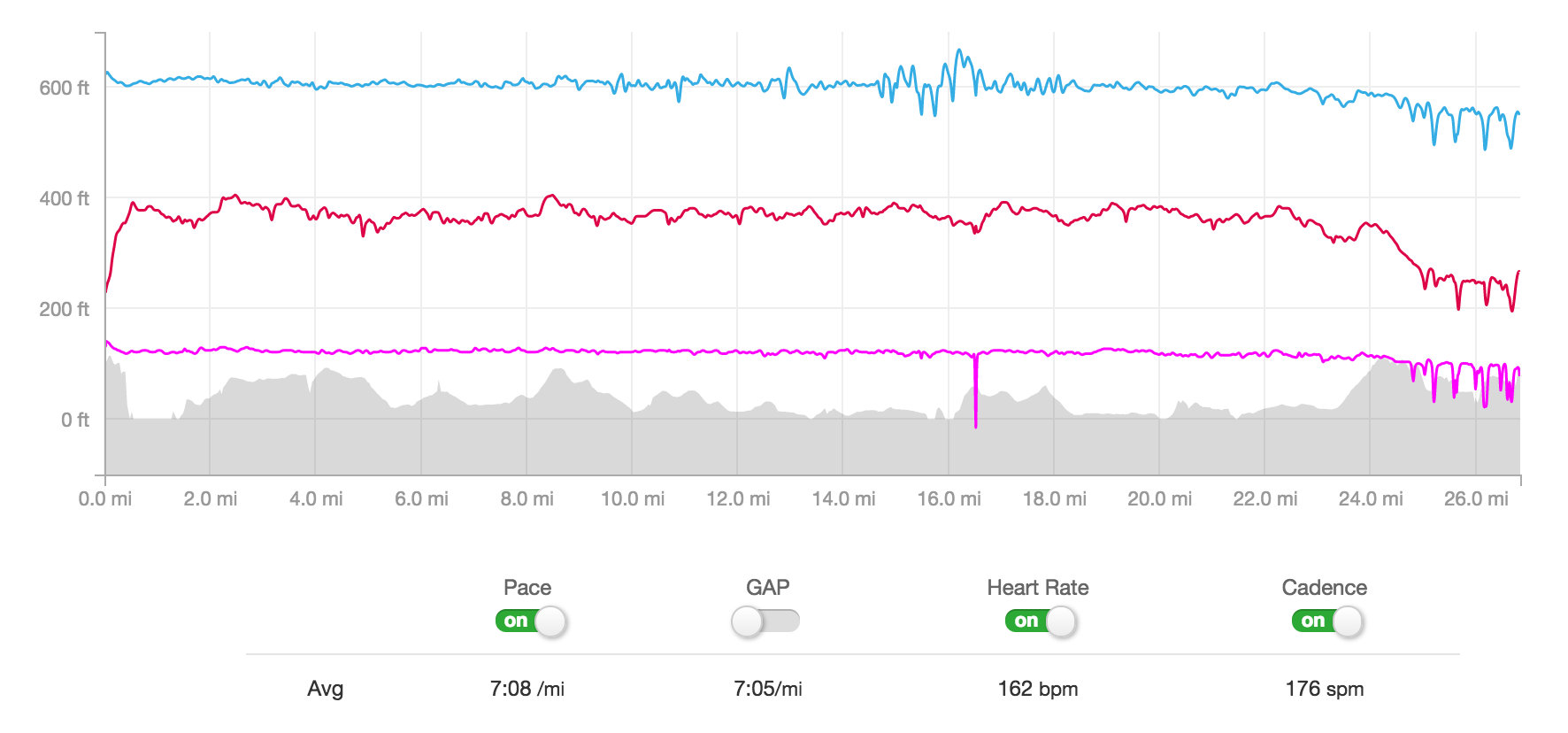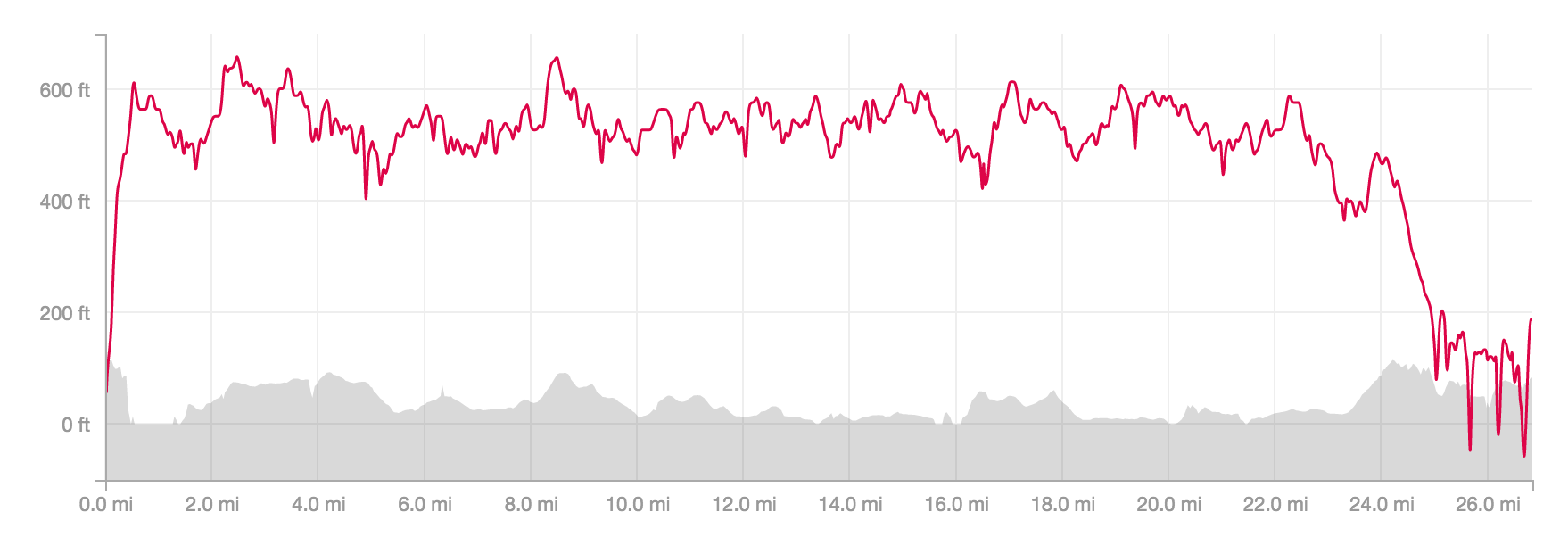Race Report: New York City Marathon 2016
On November 6, 2016 I ran the New York City Marathon. I finished in a time of 3:11:37, about a half hour slower than my best marathon. Here is the race report.
I debated writing this – I wasn’t sure it passed my litmus test of being a race – or of deserving a report. In my mind the goal of writing a race report is to document the ins and outs of an all out effort in order to learn from it and also to serve as way to remember a momentous event. I ultimately decided to write this because I think I have something to learn from it, and it was quite memorable.
If you’re interested in the training I did leading up to the race, you can read more about it here.
Successes
What am I proud of from race day?
- Finished
- Was leading my heat for the first mile
- Solid effort through the first 22 miles
- Finished before 96% of runners
- Was able to run well off of minimal training
Failures
What areas could I improve for future races?
- Lost to Chris
- Did not take it easy enough the days leading up to the race
- Did not get to the starting area early enough and missed my wave
- Did not have a good read on my fitness
- Went out way too fast
- Ultimately did not have a sound strategy or unified goals
- Didn’t stick to my fueling strategy
Thankfuls
What that was out of my control am I thankful for?
- The random number generator that accepted me to the race
- Amazing weather
- The people of New York City
- Volunteers with water every single mile
- The New York City Mets
- Getting to have a celebratory dinner with Chris, Gretchen & Rob
- My wife for letting me leave her alone for two days to check an item off my bucket list
Frustrations
What that was out of my control do I wish had happened differently?
- Morning logistics
- No one to pace off of for the first 19 miles
- Having to weave to pass a LOT of people
- Having to walk almost a mile after the race
Race Report
The following is a detailed account of my race. It is long. This is my way of paying it forward to future athletes & documenting it so I can remember later on.
Pre Race Day
Before the race I changed my mind a few times about what my goal was.
My original intent was to run the NYC Marathon as a celebration after doing well at Jack & Jill over the summer.
I missed my 2:37 goal there by 5 minutes though and so I thought I could use NYC as a second chance. After studying the course I realized that was going to be improbable due to the travel stress & race course difficulty. So I signed up for CIM, the fastest course on the west coast, in order to give myself the best shot at hitting 2:37. I planned to skip NYC since I qualified for next year.
My friends Chris & Gretchen were signed up for NYC, and beating Chris is one of my favorite pass times, so around October I decided to go and run it as a workout, one month before CIM. My high hopes were to run about 3:00 easy at NYC, which I knew would beat Chris, and then turn around to run a 2:37 a month later at CIM.
My training hit a few kinks, mainly due to my third child being born, and so by late October I realized a 2:37 at CIM wasn’t going to happen. I ran one tempo run that suggested I could hold 6:30 pace at NYC and finish around 2:50-2:55 though, which seemed like a great plan. Plugging some data into the NYC Marathon pace calculator tool, my plan seemed to line up with what they thought. I made the call to taper for the race rather than train through it and decided my goal was to have as much fun as possible while still beating Chris.
My strategy at that point was to go out slow, around 7:00 pace, drop to 6:45s for the bulk, catch up with him around mile 18-20, and then finish strong, leveraging a solid base from earlier in the year. (You will soon see that this is the exact opposite of what occurred.) I had another goal in mind of finishing with my average heart rate above 166 BPM, which is what I averaged during my fastest marathon. I knew I wasn’t as fast as I was then, but I figured if I was able to work that hard again or harder, that would be an accomplishment.
The day before the race I made a few big decisions – never a good idea. I decided that my goal was to have as much fun as possible and make this a memorable event. After all, I knew it wasn’t going to be fast (by my standards), so I might as well make it fun. I decided to wear a New York Mets hat to get the crowd support. I made the call to abandon a few of my pre race rest tendencies and go do a few NYC things. I opted to run with my phone so I could take photos & videos to remember it by.
I also decided that, since my qualifier time had me seeded with group 1A, I would go out fast & run the first miles with the professionals. I had this vision in my head of running out in front on across the bridge, side by side with runners I could never compare myself to. I could only hold their marathon pace for a mile or two, but perhaps I would even make it on TV during that time so my family could see me. After that I would likely need to take a breather, then get back in a fight through a tough and slow race. I was going to blow my race but enjoy the first 10 minutes of it.
What I hope is obvious is that I didn’t have a clear and locked goal. My plans were changing quite frequently based on the circumstances. Sometimes rolling with the punches is a good thing, but often it results in confusion and failure on all accounts.
Morning
I woke up at 6:00AM, caught an Uber with another runner and got to the ferry terminal plenty early for the 6:45 ferry to Staten Island. The race was scheduled to start at 9:45, which meant I had over three hours of waiting.
I did by best to stay warm and sit as not to burn energy. I stayed hydrated. I tried to be patient with the large crowds. I have never been to a race this big. In fact, very few people have since this year the NYC Marathon set a record for largest marathon – only a few other shorter races have ever been bigger.
I somehow bumped into Chris & Gretchen on the ferry and we acted like tourists the whole way over to Staten Island.
Once at the ferry terminal on the other side, we decided to stay inside for a bit rather than getting on the bus. A large part of that was spent waiting in line for the last nice bathroom we would see. The janitor there had a sense of humor about the crowd that remains a highlight of the day.
We eventually got in line to get on a bus, and made a mistake of getting on a full bus rather than waiting for the next one. We were standing in the isle and the bus was in traffic & not moving. We eventually sat down in the isle as best we could and watched our clocks as we realized we would likely miss our wave. We did hit another highlight though, a 70-something year old man who has run the race ~30 times telling us why he loved it so much and where the best bathrooms on the course are.
The bus pulled up and we ran to try and find our starting area. Hearing over the loudspeaker that we had missed our wave, I had to abandon my plan to go out in front and decided to go with Chris’ wave so we could run together. We got separated though and so I ran back over to my start area. After a bunch of shoving through crowds I found out I nearly missed the next wave too, but ended up making it to the front of 2A.
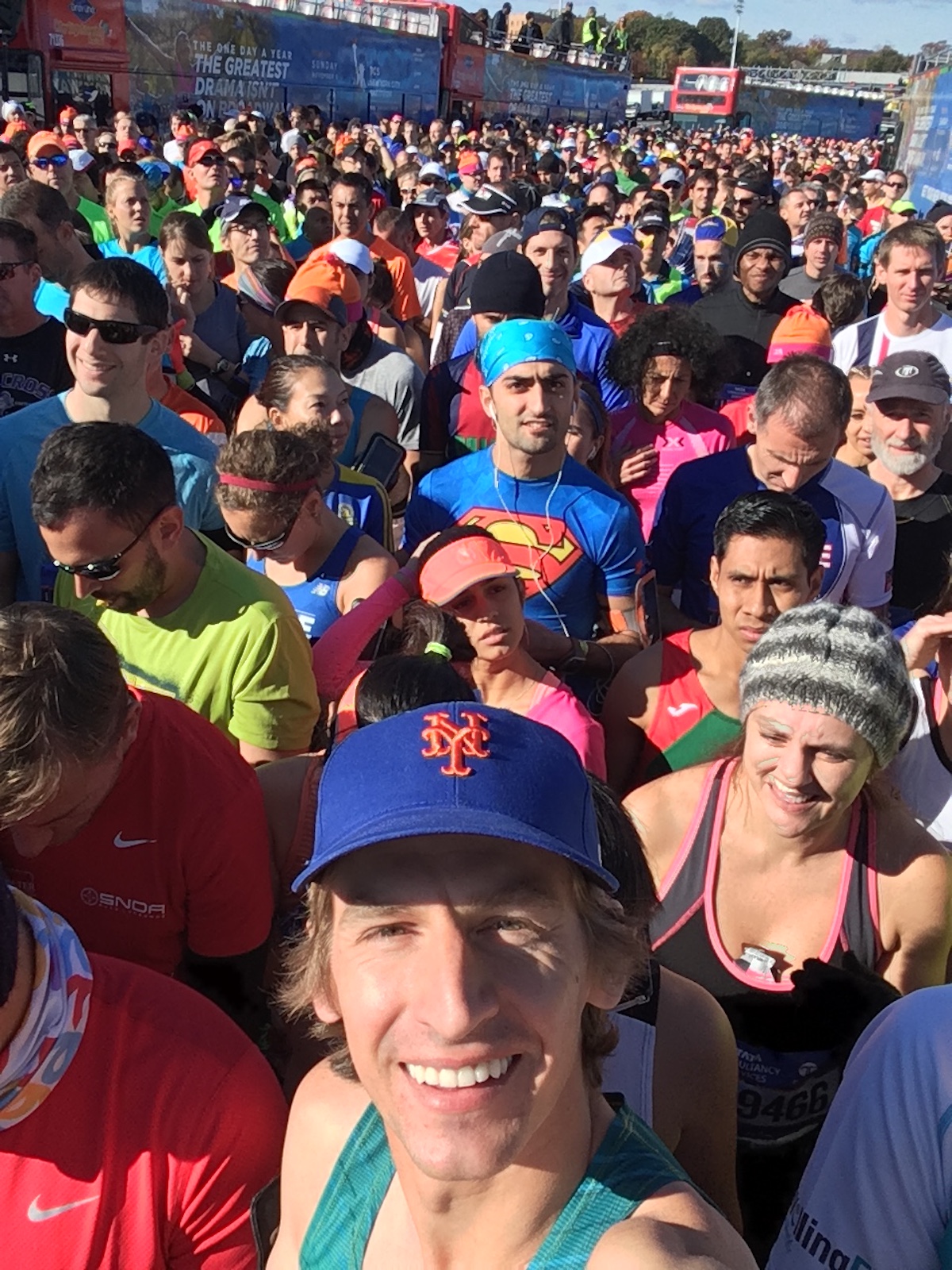
The Start
I asked around to find out what sort of paces heat 2A was set for and heard mostly 8:00-range. A fine pace for a marathon, but I had run a marathon at 6:11 a few months earlier. I was going to need to go out fast to avoid getting bottlenecked.
By turn of fate I would end up being in the perfect place to fulfill my vision of being in front on the bridge, without having to run 5:00 pace.
The cannon went off at 10:15 and I took off. I was in front. A quarter mile in I started to feel winded, and realized I was going sub six, uphill. Not a good idea. I slowed down a bit, but around then I spotted Chris’s wave.
The Bridge
I need to provide a bit of context. The way the NYC marathon start works is kind of complex. There are three color starting lines: blue, green & orange – each of which takes a different course through the first 8 miles before combining.
I was in Blue and Chris was in Orange. Both of those crossed the bridge on the top level, but were separated by a concrete barrier. Our paths would later split in Brooklyn, only to recombine at mile 8.
When I saw Chris up ahead I figured I would go catch him so we could run together. We said hi and ran side by side, like we have for hundreds of miles. (Except there was a concrete barrier between us – which, honestly, is probably a safe measure to implement on future runs). I was leading my wave and he had only a few people ahead of him in his. We essentially got to run on the narrows bridge with nothing else around – another highlight of the day.
My watch beeped after one mile, 6:25. 50 seconds faster than the plan. The, 20 second later I heard Chris’ watch beep. That is when I realized that our courses were parallel but not even – I had gone out faster, though we were now running the same pace.
You can see in this image a blue and orange line showing the different courses – notice blue starts further back but orange has to run a few extra blocks in Brooklyn.
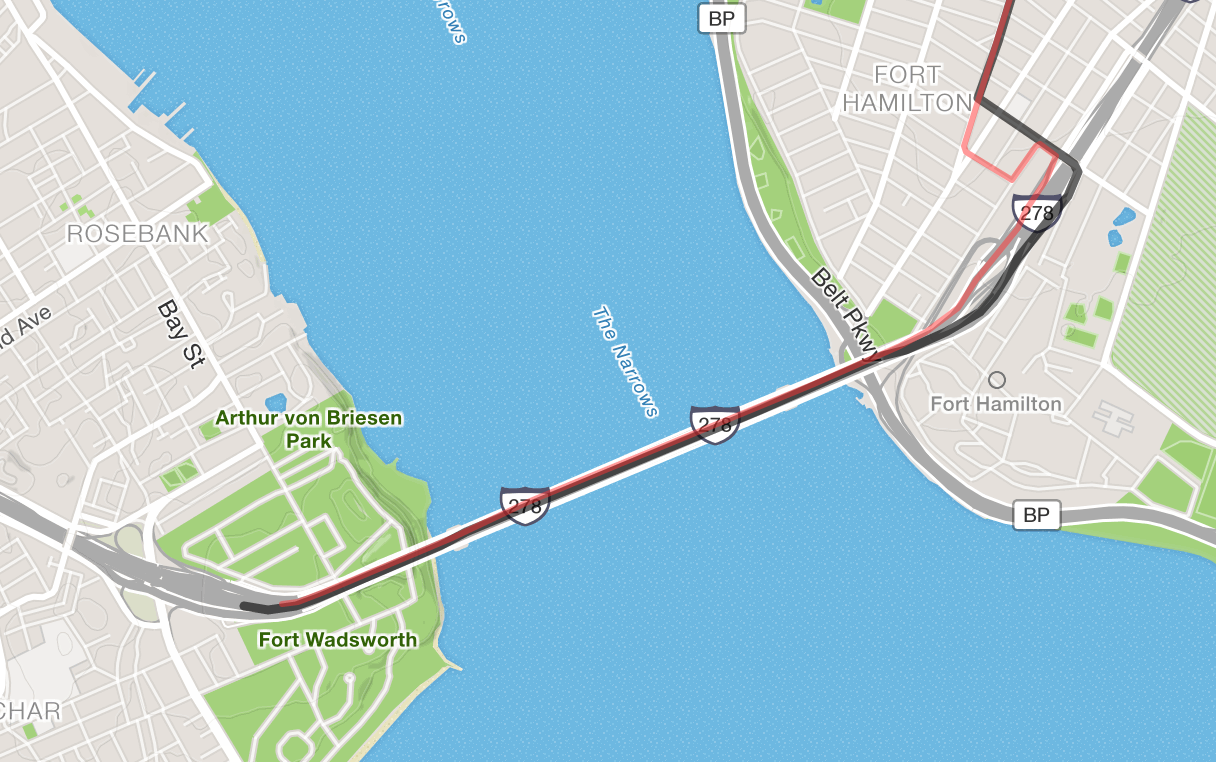
Around then the bridge crested and started heading downhill.
We cruised down the hill and hit 6:03 for the second mile. Again, much faster than planned. At that point our courses split into Brooklyn, they would reconnect around mile 8.
Brooklyn
The miles through Brooklyn were my favorite of the race. The joke is that I loved the Brooklyn half-marathon – I did quite well too. The crowds had so much energy and that was the first time we got to experience them since there had been no spectators on the bridge.
Their energy kept me pumped up. ran a 6:21 & 6:36 for my next miles and took my first gel. Around that point I started to catch people from wave 1. I was relieved that I wouldn’t be running alone. I was foolish.
I took some video, a selfie and settled into a better pace. 6:47, 6:35, 6:41, 6:42.
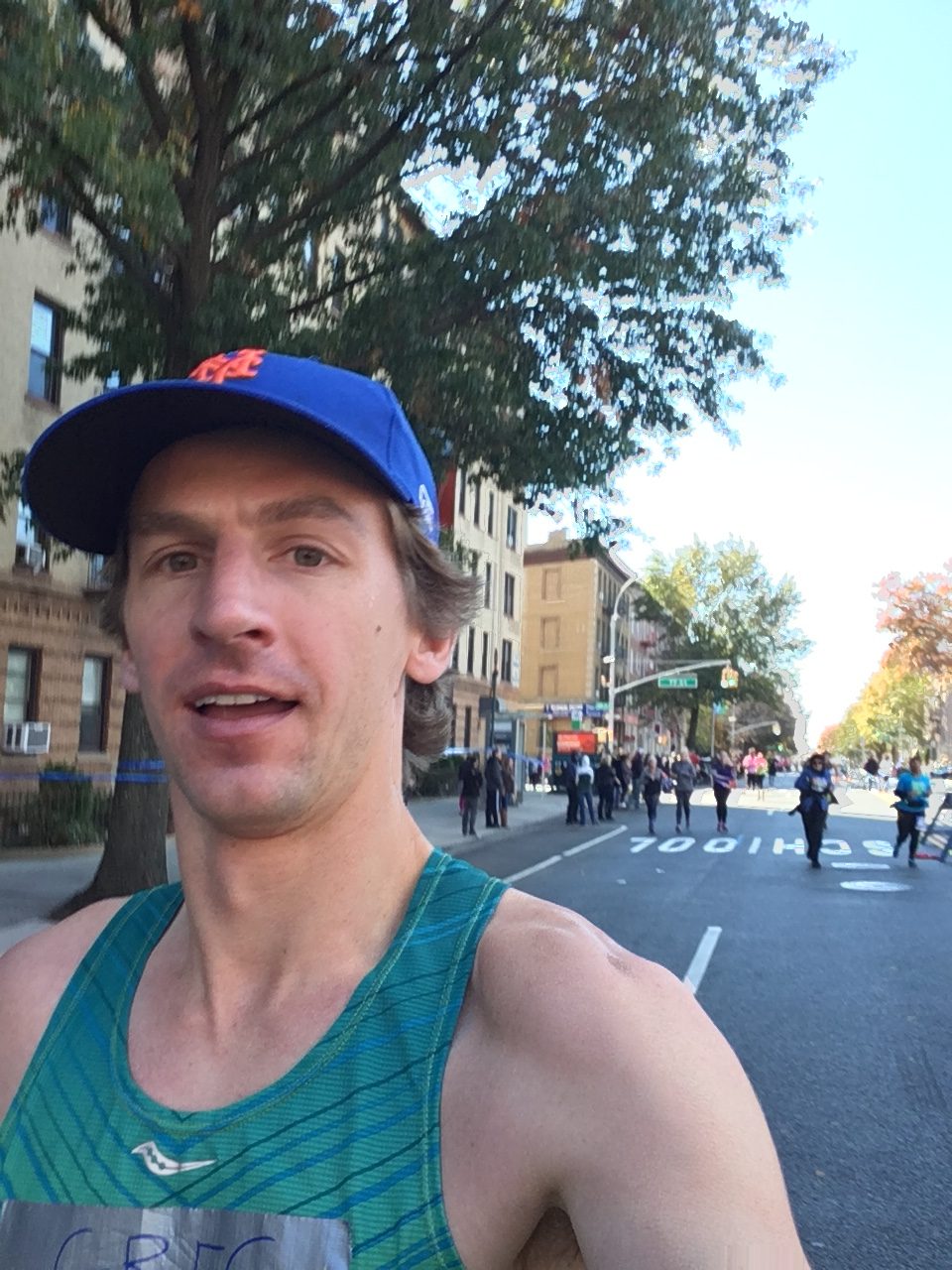
During those miles I passed the stragglers of wave 1 and made my way towards the majority of the runners. I love passing people, which probably kept my pace a few seconds faster than it would have been if I had been running with people my own pace. I took my second gel around mile 8.
Around mile 8.5 I ran past my cousin Rob’s house. I’ve been out to see Rob in NYC a half dozen times over the past 15 years, so it was great to run through his neighborhood. He was out there cheering and we connected for a high five – another highlight of the day.
At this point in the race the three waves combined and the course got really crowded. I was catching runners from wave 1, which had started 24 minutes before mine. So the runners I was passing were running about 3 minutes per mile slower than I was (doing the algebra, I was at 6:45 pace and they were at 9:15). That meant I had to plot a course around them essentially like they were standing objects – it was much like running rapids. It was draining and I wouldn’t be surprised if I ran an extra half mile weaving back and forth to either side of the road to pass people. This went from fun to frustrating.
Some rough math – I finished in 1,762 place and had started at the front of wave 2 of 4. So there were probably 12,500 people in wave 1. I passed most people between miles 5-15, of which 3 of those miles the course was still split in 3. I figure I passed around 10k people across 10 miles, roughly 1 person per 5 feet. I took a video that confirms those ballpark numbers.
Queens
I crossed the half at 1:27:31, right on schedule actually. I figured at that pace I could keep pace to hit a 2:55, go faster to get closer to 2:50 or slow down a tad and still break 3. This was a great place to be. I took my third gel somewhere around there – I can’t quite remember.
Around this point I was averaging a heart rate of 166, which was one of my goals, so I was feeling great about that.
Unfortunately I got bottlenecked on the Queensborough bridge and ran my first 7:00 split. There was just no way to pass people and I my early decisions were starting to catch up with me. I didn’t have the motivation to yell to pass them by a few seconds so I settled into pace.
Manhattan
Despite going slow, I couldn’t manage to pee, so I stopped right after the bridge hoping to put that all behind me.
As I turned down 1st avenue I decided to give it another go and put up a 6:48 & 6:52 and had my fourth gel. I had two more on my belt that I planned to take during the race but ultimately did not do that – it was a mistake that cost me.
Mile 20 I found a runner who was going a bit faster than me – likely someone who also had to start in the later wave – and I forced myself to stay with him until the mile marker. I figured if I grit it out and hold hold pace for a bit, I would get back in the groove. It was a 6:57 and that was my last sub 7 mile of the race. My hypothesis did not hold true.
Bronx
As we turned through the Bronx, which they let you run in for all of one mile, my pace was 7:20. This was now easy run territory but it didn’t feel easy. I started checking my phone to see where Chris was. As it updated I realized he was closing in on me. At one point I had a 2 minute gap on him but he had nearly caught me.
Manhattan Again
We turned back into Manhattan and just then I saw Chris pass me – we were right around the 22 mile mark. He didn’t see me so I called out to get his attention and we exchanged a few words. I thought he would run with me but he seemed pretty focused – I think he was trying to break 3:00. We were both clearly hurting. I regret that we didn’t just run the race together – that probably would have been more fun given the situation we were trying to deny we were both in.
At this point I knew it was going to be a rough finish. I decided to make a cut then and jog slowly to make sure I could finish. My next miles were 8:20 and 8:40 – that seemed like a deep enough cut in pace to enjoy the finish but was not.
I should have likely gone closer to 9:00 pace and focused on refueling. Unfortunately at mile 24 I thought my race was nearly over and that I could just push through it. It would ultimately be another ~30 minutes until I finished. I wish I had respected that time and taken in some calories.
Central Park
As I hit the park my body bonked. Full on “you don’t have the calories to move that fast” bonk. My heart rate dropped from 170 to 130 – I just didn’t have the energy to push harder. Even at that I had to take a few breathers.
The way to understand bonking is to think about fuel for a car. My body was dripping fuel into the engine at that point and if I tried to move faster than about a 9:00 mile it would burn through it and I would be forced to walk so a bit more energy could accumulate.
I walk/jogged the last two miles. It was unlike anything I’ve ever done before in a race. My mile pace was about 11:30. In the race report I wrote for my fast marathon this summer I described how towards the end everything was breaking down and I had a tough time finishing my last miles. Looking back, my slowest mile that day was a 6:37. This time around it was quite shocking to be moving at nearly half that speed.
I’ll include this picture only because I think it captures how much I was trying to grit through the pain. Not having available glycogen isn’t something you can just grit through though.
One of my big miscalculations was thinking I could hit 166 BPM for this race. What I failed to realize is that energy use is a factor of time, not of distance. This is less obvious with short races and on the track, what I am used to. I had previously proven that my body could work at a level of 166 BPM for 2 hours and 42 minutes – not 26.2 miles. When I checked my watch throughout the race and saw 166, I felt good. In reality, all that would get me was 2 hours and 42 minutes of running before a crash. In order to run for a longer time, I would need to be running at a lower effort. In fact, checking my splits, I crossed the 2 hour 42 minute mark at mile 23.5. That is almost exactly when I crashed.
I ended up finishing with a 162 average. If I had thought about this more before the race, I would have aimed for that earlier, gone out a bit slower and likely finished much faster.
This was a hard lesson but will be important if I ever run on trails where distance is often a bad predictor of time, due to elevation climbing. In those cases it is important to think about energy as a function of time. I won’t forget that.
The Finish
I timed my walking so that I had a bit of energy to jog across the finish line. It wasn’t really a celebration other than the fact that I could stop moving and get on with enjoying New York and my friends.
I regret that I didn’t do something more fun at the end. I should have just stopped at a deli around mile 24, had something to eat and gotten back on the course. Then I could have jogged it in and maybe done some pushups at the finish line for good measure. That would have been fun and my time would have been in indistinguishable 3:25 – still a great marathon time. A fun poor performance is much better than a miserable one. Misery is fine if you’re setting a record for yourself though. I wish I could have realized sooner what was happening and made that call. If ever I end up in that situation, I’ll know what to do.
Post Race
The post finish experience was one the worst I’ve ever experienced. We essentially had to walk one mile (I mapped it below) to where we could meet our family and get on the subway. Thankfully they gave us calories right after the finish – I sat down to eat and eventually met up with Chris. We got pretty cold before the .75 mile mark where they finally gave us our ponchos.
That mile probably took close to 40 minutes. I guess that was my slowest mile of the day.
Data Breakdown
It wouldn’t be a Greg post without a few charts. Here are a few of the interesting bits from this race.
I mentioned earlier that I went at a good pace and caught up with a lot of runners that started in an earlier wave, only to have many of them pass me again. Here is a nice chart that shows how it played out with one particular runner I found on Strava who ran a 3:24. Their splits were really even so the change in time between us is all due to my pace dropping. I started ~20 minutes behind them, meaning they were about 4 minutes back into wave 1. You can see that I steadily gained on them until the 23 mile mark. At that point they started gaining on me and ended up putting a good bit of distance on me in the last few miles.
Here is my pace (blue), heart rate (red) and foot turnover (pink) during the run. This is one of the charts I look at for every run. Here I see a nice build up at the start (perhaps too fast for the first half mile), then a solid steady run at a good cadence. The pace bumps around mile 15-17 are mostly due to GPS noise. You can see my bathroom stop at mile 16 where my cadence drops for a bit. At mile 22-24 things start to look a bit rough, mile 24 sees a major slow down and then you can see my alternating walking for the last few miles.
Heart rate is one of the metrics I pay a lot of attention to, so here is a look at just that.
You’ll notice a few spikes, the first one at mile 1 when I sped up to catch Chris, the spike at mile 2 when I started passing people, mile 8.5 when I saw Rob, mile 16.5 after I got out of the bottleneck of the bridge, mile 19 when I decided to push and hold onto another runner, mile 24 I made a big push to get over the last bit of the hill.
I mentioned before that I had hoped to have my average heart rate over 166. I essentially hovered at an average of 166-167 from mile 3 to 21. At that point it slowly started to drop. Going into mile 25 I was still at 166 but those last two miles dropped the average to 162.
What is Next?
2017 is going to be a light year for me. I won’t be trying for any records. I am signed up for the Boston Marathon, might repeat Jack & Jill to pace a buddy and have my eyes on a few really cool races including the legendary Dipsea & Bloomsday races.
